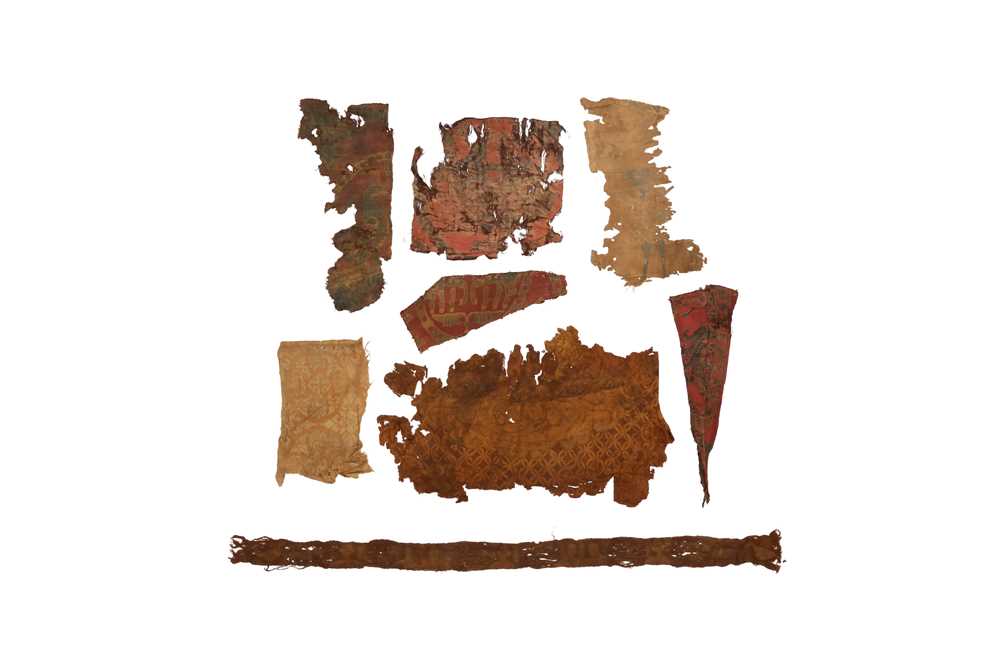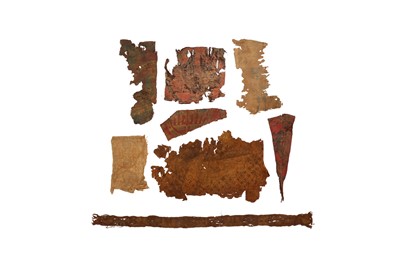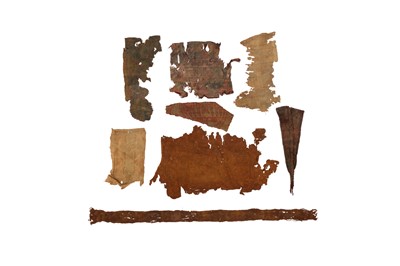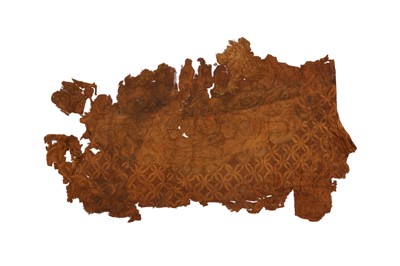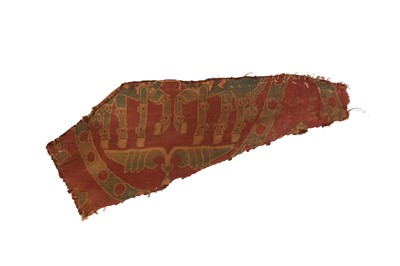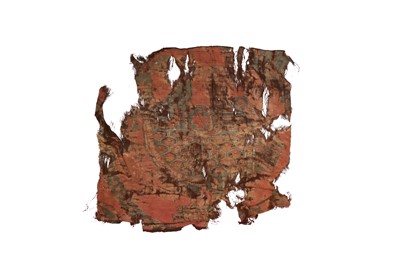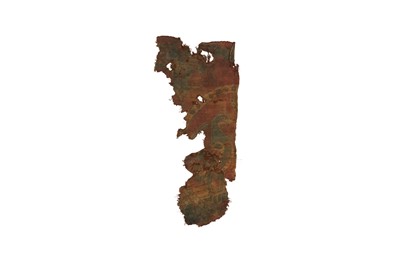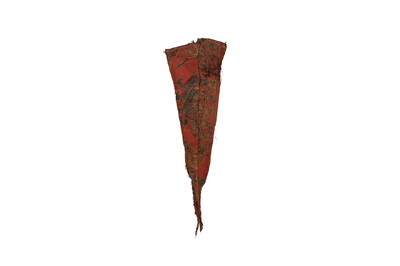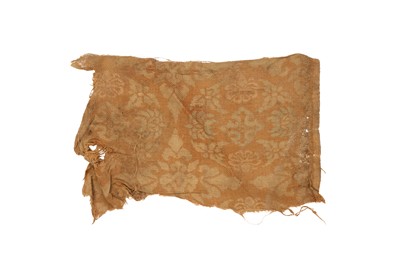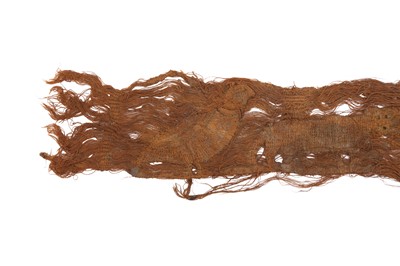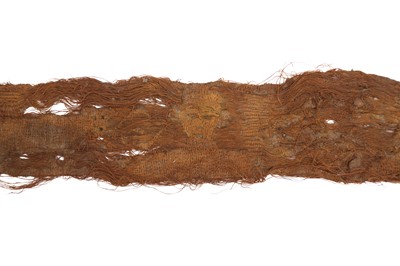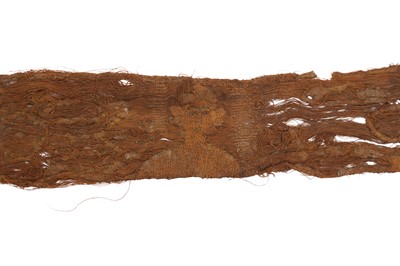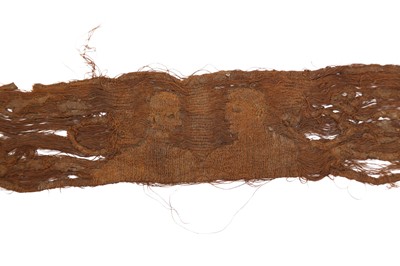28th Apr, 2023 14:00
Islamic & Indian Art
EIGHT FRAGMENTS OF SOGDIAN AND LIAO TEXTILES
Sasanian Iran and Central Asia, 5th to 7th centuries
EIGHT FRAGMENTS OF SOGDIAN AND LIAO TEXTILES
Sasanian Iran and Central Asia, 5th to 7th centuries
Comprising a silk fragment with a left-facing heraldic bird within a pearl medallion, woven in red, blue, and brown, the body with fine decorative elements, 22.5cm x 24cm; another with a right-facing plumed bird, in twill woven silk in blue and yellow on red, the pearls of blue and red within a yellow circular band, 33cm x 15cm; another, displaying the lower bodies of confronting quadrupeds above a Sasanian winged motif, the red pearls against the green circular band on red ground, 12cm x 26cm; another with a left-facing bird in blue and white on buff ground, the geometric framing motifs containing stylised flowers, 33cm x 19.5cm; two joined triangular fragments of red silk, woven in blue and yellow, the upper fragment with stylised plumes, a ‘key’ pattern in the roundel, the lower with chain grids, the inner roundel with interlocking cordiforms, 11cm x 34cm; a fragment of Chinese silk, woven in pastel shades on buff ground with floral medallions, with a strong selvedge, 13.5cm x 25cm; a panel of russet silk, finely worked in interlocking circles overlaid with scrolling wavy motifs, and areas of metallic thread imitating fine plumage, 27cm x 47cm; and a narrow belt of fine silk, symmetrically woven with a repeating figural motif featuring in a sequence a bird, a cow, a female bust, and two male busts facing one another, the left selvedge present, 6cm x 87cm.
With their iconic beaded roundels containing confronted birds and animals, Sogdian textiles have been puzzling and mesmerising scholars for a long while, and a definitive consensus on their exact origin, date and site(s) of production hasn’t been reached yet. These textiles usually show a combination of three or four colours (red, yellow, green, and/or blue) and among the most popular zoomorphic patterns woven in these structures, especially in pairs and facing each other, are winged horses, boars’ heads, rams, stags, ducks, lions, pheasants, and the creature often described as simurgh or senmurv. Similar subjects are to be encountered on a number of Sasanian vessels and artworks. Beaded figural medallions are emblematic of most Central Asian textile designs, often described in early Islamic texts as ‘a celestial vault with stars’, and they recall patterns found on both Byzantine and Ancient Iranian coins.
According to Chinese sources, Persian weavings in cotton and polychrome silks, specially woven in silk weft-faced compounds (tabby or twill), were also reproduced in the Sichuan province in the 7th century. In these southwestern Chinese regions, colonies of Central Asian—and thus mostly Sogdian— people had established themselves and imported foreign crafts, possibly to evade the high Sasanian trade taxation. Despite Chinese imperial edicts forbidding locals to wear patterned textiles, such as these, the archaeological evidence unearthed at several Sino-Sogdian tomb sites in Xinjiang, Gansu, and Sichuan provinces, proves that Sogdian sabao (chiefs or caravan leaders) were well-integrated into the cosmopolitan Chinese society of the time and that their textiles, which combined Western iconography with Chinese material and technique, were prized and sought-after.
Sold for £3,750
Includes Buyer's Premium
Do you have an item similar to the item above? If so please click the link below to submit a free online valuation request through our website.
